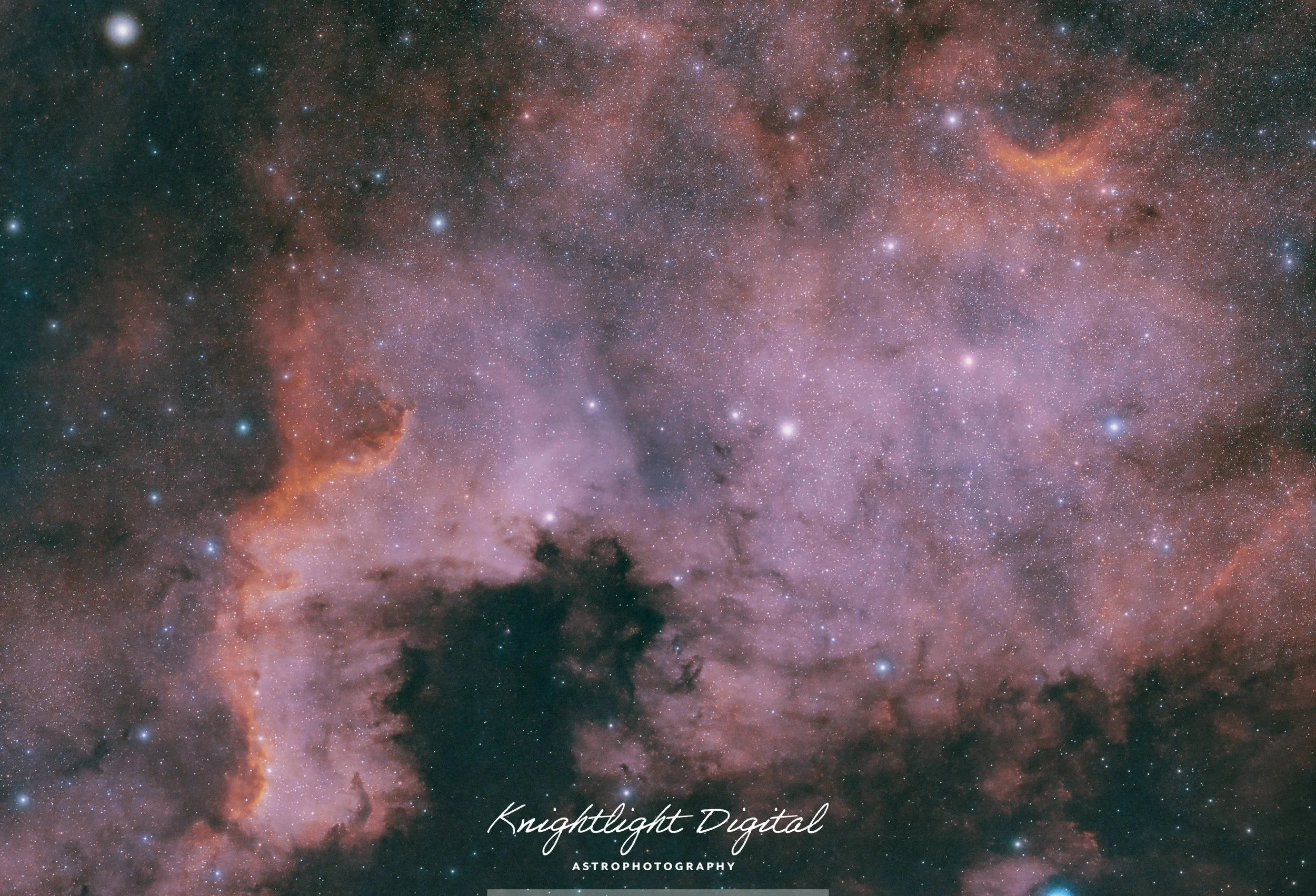The North American Nebula
The North American Nebula, NGC7000
Click here to see my new version of this data.
The North American Nebula is a massive cloud of gas and dust. So massive, in fact, that the first dedicated astrophotography camera I used didn't have a large enough sensor to capture it all in a single frame. When I imaged it with that camera, an ASI585MC (non-cooled), I had to do a mosaic to fit roughly the same amount of area you see in the image above. That was almost a year ago and I wasn't using Pixinsight yet. The result was a rather bluish monochrome patchwork that I was happy with at the time. I'm by no means embarrassed by it - everyone starts somewhere in this crazy hobby - so if I can find it I'll post it.
❤️Order framed prints or canvases of this photo on Society6
The image you see here is the result of about 10 hours of total data. It's the first image I captured using the Askar C1/C2 narrowband filters. The second night of imaging saw some clouds roll in early so I ended up with less OIII data than I would have liked. Still, the amount of OIII really becomes apparent in the lighter central areas of the nebula. I didn't tweak the image for blues as much as I did in my Veil image, so the result is more true to the red tones you'll see in a lot of other NGC 7000 images. I'll definitely revisit this data again when I've gotten better and narrowband processing.
Some information about NGC 7000 from Microsoft CoPilot:
The North America Nebula (NGC 7000), also known as Caldwell 20, resides in the constellation Cygnus, close to the bright star Deneb. Its distinctive shape resembles the continent of North America, complete with a prominent "Gulf of Mexico." This emission nebula covers an area more than ten times the size of the full moon, but its low surface brightness makes it invisible to the naked eye.
Under dark skies, binoculars or telescopes with a large field of view reveal its foggy glow. The most concentrated star formation occurs in the region known as the Cygnus Wall. NGC 7000 lies approximately 1,600 light-years away from Earth.
And finally, my technical notes.
Equipment
Telescope: Askar 71f refractor
Camera: ZWO ASI294MC Pro
Mount: Skywatcher EQ-M 35 Pro
Filters: Askar C1 (Ha/OIII), Askar C2 (SII/OIII)
Data:
~ 6 hours Ha/OIII (180 subs)
~ 4 hours SII/OIII (120 subs)
Processed in Pixinsight
Seeing conditions were slightly above average the first night and below average the following night
